Introduction to the Importance of Website Loading Speed
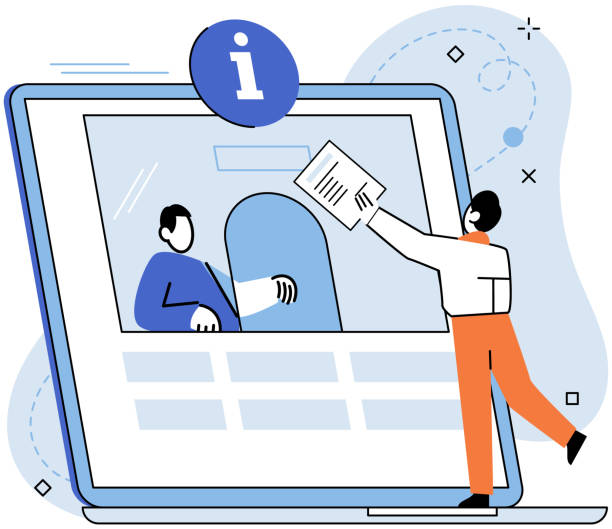
In today’s digital world, #site_speed is not just an advantage, but a vital necessity.
Optimal user experience and better ranking in Google search results are highly dependent on web page loading speed.
Studies have shown that users expect a website to load in less than three seconds, and if not, many of them leave the site.
This early abandonment means losing potential visitors and business opportunities.
Therefore, focusing on fast website design and its optimization is the foundation of success for any online business.
A slow website can not only harm the user experience but also negatively impact your SEO ranking.
Google’s algorithms consider site speed as one of the key factors in page ranking.
This highlights the strategic importance of Search Engine Optimization (SEO) alongside #user_experience.
Achieving a high-speed website requires a comprehensive approach that includes optimizing code, images, server, and many other factors.
This explanatory chapter helps you understand why fast website design should be a priority in your web development projects.
Is your online sales not as you expect? With RasaWeb, solve the problem of low sales and poor user experience forever!
✅ Increase visitor-to-customer conversion rate
✅ Create an enjoyable user experience and increase customer trust
⚡ Act now to receive free consultation!
Key Principles for Achieving High-Speed Website Design

To achieve a #high_speed_website, adherence to a set of technical and operational principles is essential.
The first step in this path is code optimization.
Ensure that your HTML, CSS, and JavaScript codes are minified, and avoid unnecessary files and heavy plugins.
This significantly helps reduce the overall page size and, consequently, #loading_speed.
Using #caching mechanism is another fundamental principle.
By temporarily storing data in the user’s browser or on the server, the number of requests to the server decreases, and pages load faster.
Image and media optimization is also of particular importance, which will be discussed in detail in subsequent chapters.
Choosing a powerful and suitable hosting also plays a vital role in fast website design.
This educational and guidance chapter gives you a comprehensive insight into these principles so you can take strong steps towards improving your website performance.
The better these fundamental principles are observed, the more impressive the results of fast website design will be.
Choosing the Right Host and CMS for Achieving Highest Speed

The correct choice of #hosting and Content Management System (#CMS) are two very important factors in fast website design.
Inadequate hosting can reduce your site’s speed even with the best client-side optimizations.
Look for hosting providers with powerful servers, high bandwidth, and support for new technologies like HTTP/2 and SSD.
Also, using a Content Delivery Network (CDN) can significantly reduce loading time for users worldwide by distributing your site’s content across various geographical servers.
Regarding CMS, WordPress, although popular, requires specific optimizations for fast website design, including choosing a lightweight theme, essential plugins, and caching settings.
Simpler content management systems or custom web development frameworks can give you more control over optimizations, but they require more technical knowledge.
This specialized section helps you more carefully choose your platform and host to achieve optimal speed.
The table below provides a comparison of hosting types and their impact on site performance:
| Hosting Type | Advantages | Disadvantages | Suitable For |
|---|---|---|---|
| Shared | Low-cost, easy setup | Variable speed, limited resources, affected by other sites | Small and beginner websites |
| Virtual Private Server (VPS) | Dedicated resources, more flexibility | Requires more technical knowledge, higher cost | Medium-traffic websites, growing businesses |
| Dedicated Server | High performance, full control, high security | Very costly, requires specialized management | Large, high-traffic, and commercial websites |
| Cloud | High scalability, pay-as-you-go, high stability | More complexity, variable cost | Websites with fluctuating traffic, dynamic web applications |
The Role of Image and Media Optimization in Increasing Site Speed
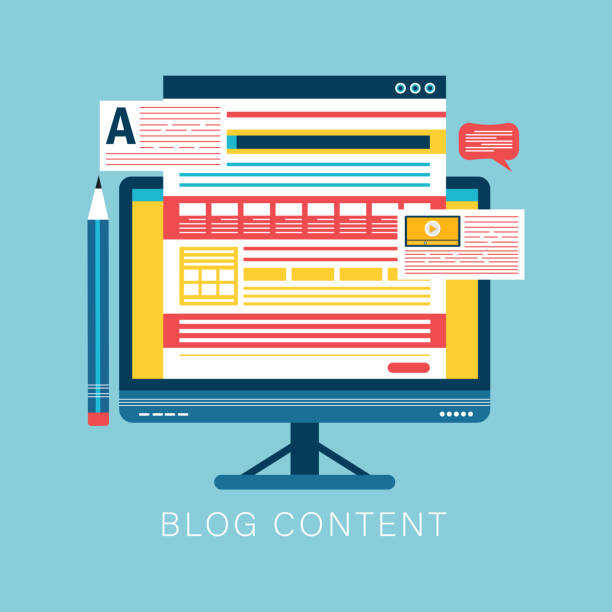
One of the biggest factors slowing down a #slow_site is the use of unoptimized images and media files.
High-volume images can significantly increase page loading time.
For fast website design, it is essential that all images are compressed and optimized before being uploaded to the web.
Using modern image formats like WebP, which have smaller sizes and offer good quality, is recommended.
Also, implementing #lazy_loading for images and videos is very effective.
With this method, images are only loaded when they are in the user’s viewport, which means reducing the initial server load and increasing the initial site speed.
Various online tools and plugins are available for compressing and optimizing images that can facilitate this process.
Even for background images and icons, using SVG instead of PNG or JPG can help reduce the overall page size.
This educational and explanatory chapter provides practical steps for achieving fast website design by optimizing media.
Does your company’s website create a professional and lasting first impression on potential customers? RasaWeb, with its professional corporate website design, not only represents your brand’s credibility but also opens a path for your business growth.
✅ Create a powerful and reliable brand image
✅ Attract target customers and increase sales
⚡ Get free consultation now
Reducing Code and Script Size for Optimal Performance
![]()
#Optimized_coding and reducing the size of #CSS and #JavaScript files are core pillars of fast website design.
Minifying code means removing white spaces, comments, and unnecessary characters, which reduces file sizes and helps the browser parse them faster.
In addition to minification, optimizing how scripts are loaded is also crucial.
JavaScript scripts are often “render-blocking”, meaning they stop page rendering until they execute.
Using defer or async attributes in <script> tags can solve this problem.
For CSS, placing critical codes at the top of the page and asynchronously loading non-essential ones can help improve initial site speed.
Removing dead code and unused plugins is also of high importance.
This specialized guidance helps you take a big step towards fast website design and significantly increase your website’s efficiency by cleaning up and optimizing your code.
Caching and CDN: Vital Solutions for Improving Site Speed

To achieve #high_speed on a website, #caching and #CDN are two extremely powerful and vital tools.
Caching means storing a copy of your website’s content in a location closer to the user (such as their browser or a cache server).
This means that on subsequent visits, there’s no need to request from the origin server again, and content loads much faster.
Various types of caching are available, including browser caching, server caching (like Redis or Memcached), and object caching.
Proper use of each of these methods can significantly reduce server response time and provide a better user experience.
Alongside caching, CDN (Content Delivery Network) plays a complementary role.
A CDN is a global network of servers that stores copies of your website’s static content (such as images, CSS, JavaScript) in various geographical locations.
When a user visits your site, the content is delivered from the closest CDN server to them, which reduces network latency and increases loading speed.
This explanatory and specialized approach emphasizes that fast website design is almost impossible without effective implementation of caching and CDN.
These two technologies together ensure the stability and high performance of your site, especially for websites with high traffic or global audiences.
Site Speed Measurement and Analysis Tools
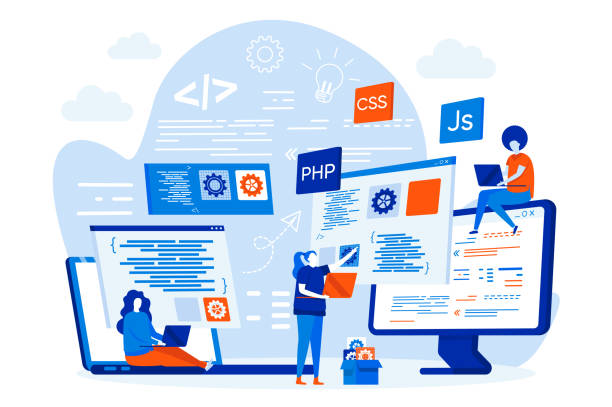
To ensure that your efforts towards fast website design have been fruitful, using speed measurement tools is essential.
These tools identify your website’s strengths and weaknesses and provide suggestions for improvement.
One of the most widely used tools is Google PageSpeed Insights, which provides performance scores for desktop and mobile versions and tells you which elements need optimization.
Another very popular tool is GTmetrix, which, in addition to performance scores, provides detailed information on loading timings, Waterfall charts, and optimization recommendations.
Lighthouse, built into the Chrome browser, is also an excellent tool for auditing performance, accessibility, and SEO.
These analytical tools help you continuously monitor and improve your #site_performance.
Regular review of these reports is an important part of the fast website design process.
This news and guidance section introduces you to the most important tools so you can apply the necessary optimizations with full awareness.
| Tool Name | Key Features | Advantages | Disadvantages |
|---|---|---|---|
| Google PageSpeed Insights | Core Web Vitals scores, optimization recommendations, desktop/mobile breakdown | Integration with Google metrics, free, simple user interface | Suggestions are sometimes generic, less technical detail compared to other tools |
| GTmetrix | Waterfall report, YSlow and PageSpeed scores, performance monitoring | Very high technical detail, practical and precise suggestions, ability to test from various locations | More complex user interface for beginners, some features require a premium account |
| WebPageTest | Testing from different geographical locations, internet speed simulation, loading video | High accuracy, great flexibility, suitable for deep analyses | Highly technical, complex for beginner users |
| Lighthouse (Built-in Chrome) | Performance, accessibility, SEO, best practices audit | Easy access in browser, comprehensive and useful reports | Tests only from a local user’s perspective, requires browser settings |
User Experience and Responsive Design for Speed
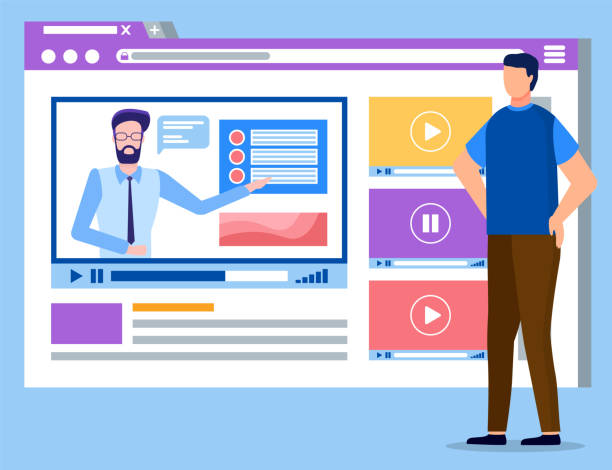
In the discussion of #fast_website_design, technical optimizations alone are not enough; user experience (#UX) also plays a pivotal role.
A site might be technically fast, but if its design is complex, navigation is difficult, or it is not #responsive, users will quickly leave.
Responsive design means that your site is displayed correctly on all devices, including desktops, tablets, and mobile phones, and performs consistently.
Given the significant increase in mobile internet usage, the Mobile-First Design approach has become a standard.
This approach means designing first for smaller screens and then expanding to larger screens, which naturally leads to lighter code and improved mobile loading speed.
A responsive design not only helps improve user experience but is also highly important from an SEO perspective for fast website design, as Google ranks sites that are well-optimized for mobile higher.
This analytical and engaging section demonstrates the importance of coexistence of speed and aesthetics in a successful website.
Is your company’s website as professional and trustworthy as it should be? With specialized corporate website design by RasaWeb, create an online presence that reflects your credibility and attracts more customers.
✅ Build a powerful and professional image for your brand
✅ Convert visitors into real customers
⚡ Get free consultation now!
Security and Its Impact on Fast Website Design Performance
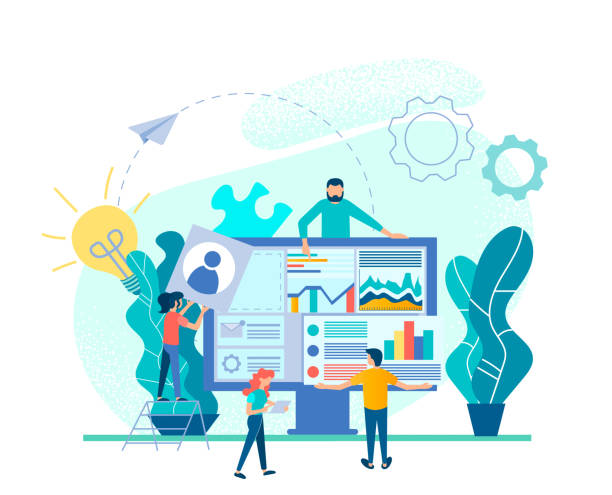
#Site_security and #site_speed might seem like two separate concepts at first glance, but in reality, they are closely linked.
A secure site is a trustworthy site, and this trust indirectly affects user experience and, consequently, your site’s speed.
Implementing #SSL certificate (HTTPS) is not only vital for data security but can also help improve speed by enabling HTTP/2 protocols.
HTTP/2 allows multiple requests and responses to be sent simultaneously over a single connection, which leads to a reduction in overall page loading time.
But can security tools like Web Application Firewalls (WAF) or security plugins slow down the site?
This is a questionable content whose answer depends on the implementation and quality of the security tool.
Some security tools might introduce a slight loading delay by adding extra processing layers, but their security benefits usually outweigh these delays.
The key to fast and secure website design is finding the right balance between the two.
Choosing optimal security solutions and configuring them correctly to minimize impact on performance, is of high importance.
This specialized and analytical section makes you think about how security can be ensured without sacrificing website speed.
The Future of Fast Website Design and Emerging Technologies
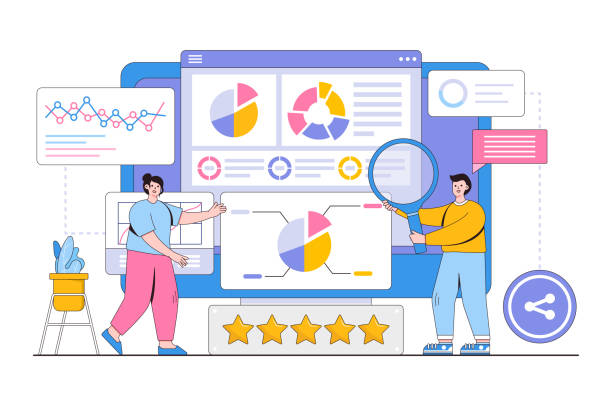
The web world is rapidly evolving, and with the emergence of #new_technology, #high_speed_website_design is also constantly changing and improving.
One of the most important developments is the advent of HTTP/3, built upon the QUIC protocol, promising reduced latency and improved performance on unstable networks.
This new protocol can significantly impact site loading speed, especially in mobile communications.
Furthermore, WebAssembly allows developers to run high-performance code directly in the browser, which can bring unprecedented speed to complex and computationally intensive web applications.
Progressive Web Apps (PWAs) are also changing how users interact with websites.
PWAs provide a user experience similar to native applications with features like offline functionality, push notifications, and quick access to the home screen, all of which significantly contribute to improving site performance and speed.
This news and analytical chapter gives you an insight into the future trends of fast website design and introduces you to technologies that will soon become standard.
Preparing for these changes will help you always stay one step ahead of the competition and have a high-speed website.
Frequently Asked Questions
| Number | Question | Answer |
|---|---|---|
| 1 | What does fast website design mean? | Optimizing a website for quick page loading, improved user experience, and SEO ranking. |
| 2 | Why is website loading speed important? | Increases user satisfaction, reduces bounce rate, improves SEO, and increases conversion rate (sales/action). |
| 3 | What tools are available for testing website speed? | Google PageSpeed Insights, GTmetrix, Pingdom Tools are common tools. |
| 4 | What are the main causes of a slow website? | Unoptimized images, heavy JavaScript and CSS codes, poor hosting, and lack of caching. |
| 5 | What is “Caching” and how does it help website speed? | Temporarily storing website data in the user’s browser or on the server for faster loading on subsequent visits. |
| 6 | How to optimize images to increase website speed? | Reducing image size (compression) without significant loss of quality, using modern formats (WebP), and setting appropriate dimensions. |
| 7 | What role does CDN (Content Delivery Network) play in fast website design? | Distributing website content across various servers worldwide to deliver content from the closest server to the user. |
| 8 | Does choosing the right host (web hosting) affect website speed? | Yes, quality hosting with powerful servers is essential for fast website loading. |
| 9 | What is the Minification technique and why is it used? | Removing extra characters (white spaces, comments) from HTML, CSS, JavaScript codes to reduce file size. |
| 10 | What is the relationship between responsive design and website speed? | Responsive design means correct display on different devices; if not implemented correctly, it can create extra load and reduce speed. Responsive optimization is important for speed. |
And other services of RasaWeb Advertising Agency in the field of advertising
SEO techniques for increasing ad ranking on industrial websites
Importance of regular updates for medical equipment advertisements
How to introduce specialized medical equipment in ads
Impact of seller’s brand on the success of industrial ads
How to make ads attractive for hospitals and clinics
And over a hundred other services in the field of internet advertising, advertising consultation, and organizational solutions
Internet Advertising | Advertising Strategy | Advertorial
🚀 With RasaWeb Afarin, take your business to digital heights and establish a powerful online presence tailored to today’s needs with our specialized services, including corporate website design. To learn more about our comprehensive digital marketing solutions, visit RasaWeb Afarin’s website.
📍 Tehran, Mirdamad Street, next to Bank Markazi, Southern Kazeroon Alley, Ramin Alley, No. 6




